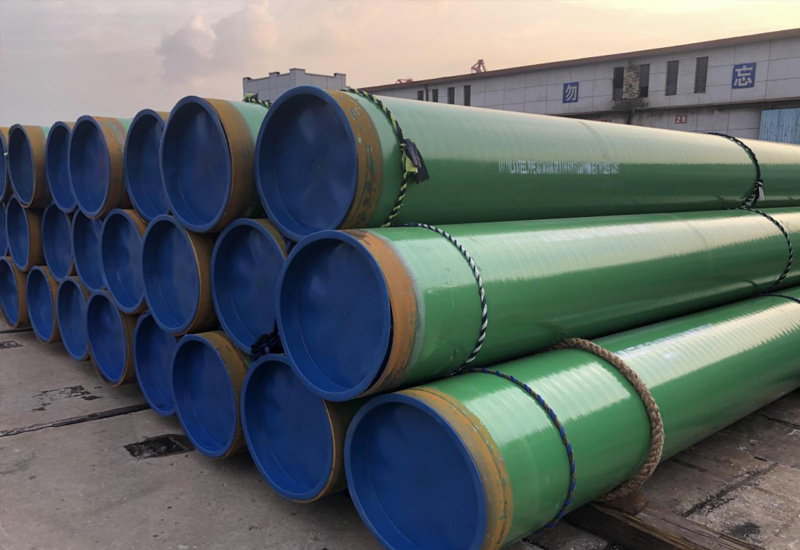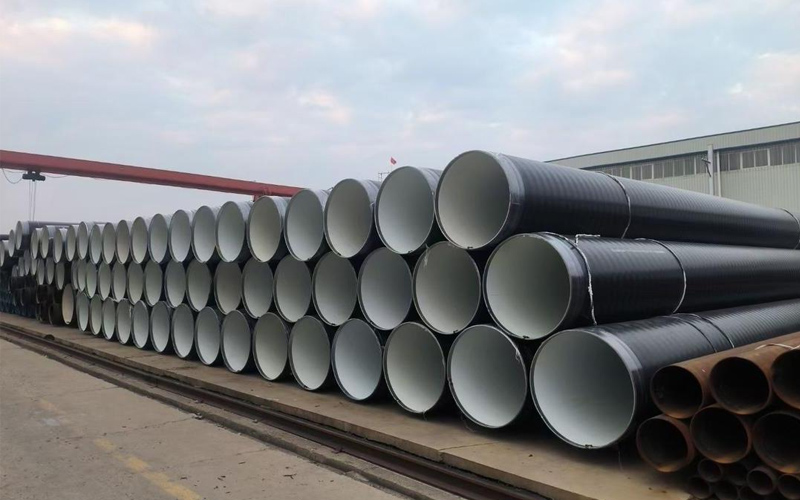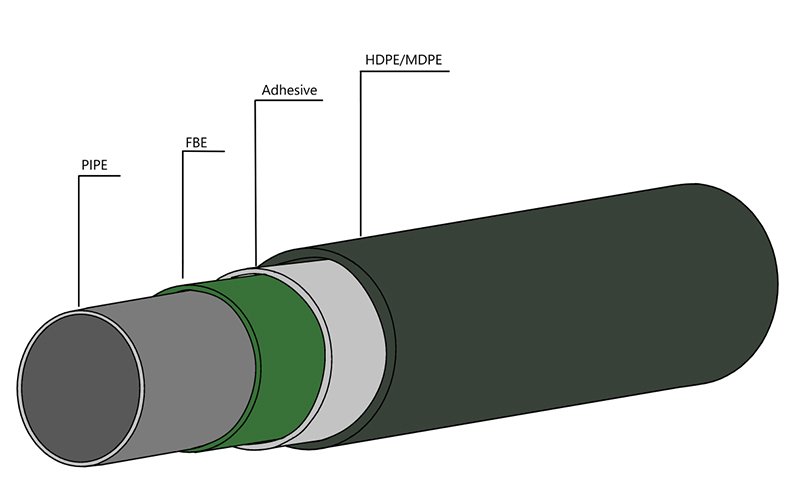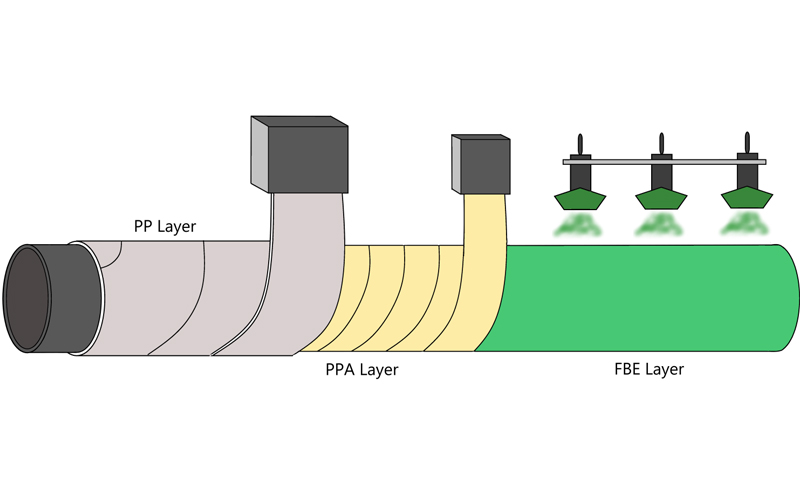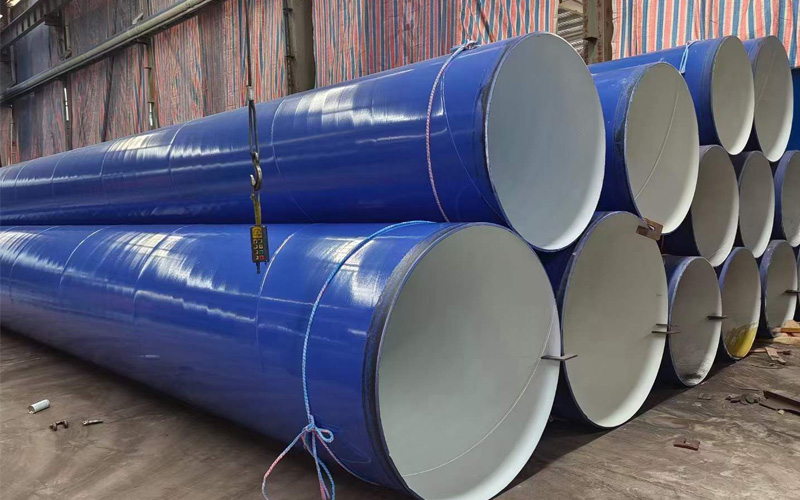EFW ERW SAW: An Engineer’s Guide to Welded Pipe Processes
Introduction
When it comes to specifying welded steel pipe, engineers face a bewildering array of acronyms: EFW, ERW, SAW, and HFW. These are not synonymous terms. They are completely separate manufacturing processes and metallurgical principles and if you specify the wrong one could result in catastrophic engineering failures. This guide is intended to make the above clearer by splitting it into two camps – Resistance Welding (ERW) vs Fusion Welding (EFW). Then, we get down and dirty, with a detailed technical comparison, about how SAW (Submerged Arc Welding) – the process which underpins Allland’s core LSAW and SSAW products – is the most sophisticated and reliable processing the EFW family can offer.
ERW (Electric Resistance Welding)
The first camp, ERW, is a high-speed, efficient process defined by one core principle: it is a forge weld, not a fusion weld.
Core Principle: Pressure + Resistance (No Filler)
The fundamental difference between EFW and ERW welding is that the ERW process does not use any external filler metal (like welding wire).
Process modern form is generally HFW (High Frequency Welding). A steel coil is uncoiled and gradually shaped into a round tube by a number of rollers. The two open edges are aligned and a strong high-frequency current (200-800 kHz) is applied. Owing to the “skin effect” this current temperatures only the two facing edges to a plastic, forgeable temperature (ca. 1200-1400°C). Right at the moment of maximum temperature, a set of “squeeze rollers” press the edges together with tremendous force. This manufacturing process welds the three edges into one, solid join.
Metallurgy and Limitations
The resulting “weld” is a forged, parent metal seam, narrow in width. The process is very quick and economical, which makes ERW pipe the most common choice for small-to-medium-diameter applications (such as ASTM A53 pipe or SHS).
Nevertheless the method could not be taken too far. The heat and pressure result in a unique grain pattern in the HAZ (Heat Affect Zone) which may differ from that of the pipe body. Quality ERW pipe must be heat treated post-weld “normalizing” in order to refine this grain structure to enhance the ductility and toughness of the weld. That said, traditional ERW is frequently subject to limitations when it comes to high pressure applications, very thick walls, or critical low temperature service when toughness is paramount.
EFW (Electric Fusion Welding)
The second camp, EFW, is a completely different metallurgical process. Its core principle is “Arc + Melting,” creating a fusion weld.
Core Principle: Melting and Solidification
An Electric Fusion Weld (EFW) is created by using an electric arc to generate intense heat, melting the parent metal of the pipe edges (and often, a filler metal) into a molten pool. This pool, or “weld puddle,” then cools and solidifies, fusing the two sides together into a single, solid piece of metal that is, in essence, a small, refined casting.
It is important to know that EFW is a very general term for welding, not one type of process. In fact it encompasses common processes such as Gas Metal Arc Welding (GMAW or “MIG”) and Gas Tungsten Arc Welding (TIG).However in the big-diameter pipe industry, they’re just too slow.
When an engineering standard (such as ASTM A671 or A672) requires EFW pipe, it typically means the most sophisticated, high-production method within this group: SAW (Submerged Arc-Welding) is intended, in almost every case.
A Deep Dive on SAW (Submerged Arc Welding)
This is where Allland’s core product technology shines. What is SAW pipe?It is the most robust, dependable, and high output fusion welding technique ever created for the oil and gas industry and heavy industrial work.
Both of Allland’s flagship products, LSAW (Longitudinal SAW) and SSAW (Spiral SAW) pipe, are manufactured using this superior process.
The SAW Process: The Power of the Flux
What differentiates the SAW is that the electric arc is “submerged” beneath a layer of granular flux. It is not merely a passive cover but an active chemical agent with two unparalleled advantages: it is a protective shield and a cleaning agent.
Technical Advantage 1: Ultimate Weld Purity
The flux layer on the surface is isolating this atmosphere from the molten weld pool. Thus we see perfect protection against oxygen and nitrogen contamination. This is a protection that is many times more effective than that of any open-arc process resulting in an ultra pure, clean, dense weld with very low levels of hydrogen, high ductility, and maximum resistance to cracking.
Technical Advantage 2: Controllable Weld Properties
This is the most critical difference compared to ERW. The SAW process uses a consumable filler metal (a wire) that is fed into the arc and melted to create the weld.
With an ERW forge weld, you are stuck with the characteristics of the parent metal. For a SAW fusion weld, the weld seam can be engineered by the manufacturer. By choosing certain wire and flux mixtures, an advanced manufacturer such as Allland can tailor the chemistry and the metallurgical attributes of the resulting weld deposit. We can formulate a weld seam that exactly matches — or surpasses — the strength, toughness and corrosion resistance of high-quality parent metals such as API 5L X70.This makes SAW the only choice for producing the critical service, heavy-wall, high-performance pipe.
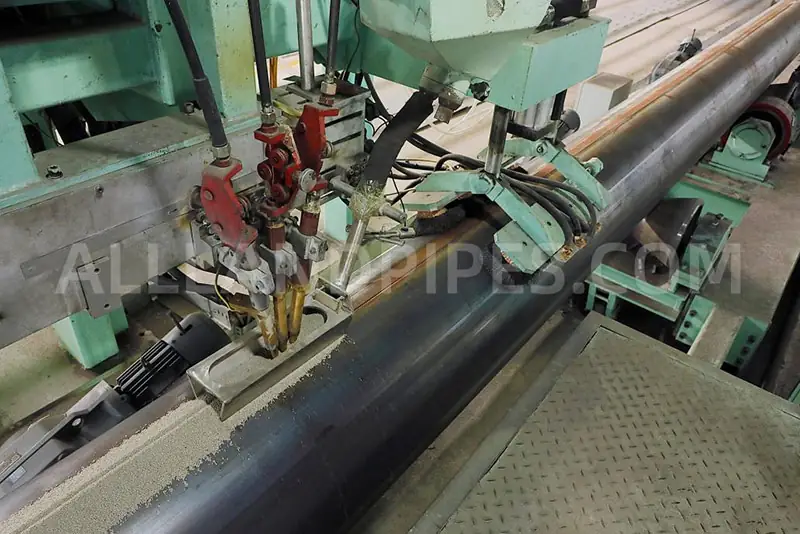
ERW vs SAW Showdown
This technical comparison table provides a clear, quantitative summary for engineers and buyers.
| Feature | ERW (Electric Resistance Welding) | EFW / SAW (Submerged Arc Welding) | Engineering Rationale & Analysis |
| Welding Principle | Pressure + Resistance (A Forge Weld) | Arc + Melting (A Fusion Weld) | This is the fundamental metallurgical difference between EFW and ERW welding. |
| Use of Filler Metal? | No | Yes (Consumable Wire & Flux) | The critical difference. SAW weld properties are controllable via alloy design. ERW properties are limited to the parent metal. |
| Weld Structure | A narrow, forged “stitch” of the parent metal. | A thick, wide, homogenous weld bead (a “cast” structure). | The SAW weld is a substantial, deposited weld, often thicker than the pipe wall, making it exceptionally strong. |
| Applicable Wall Thickness | Thin to Medium Wall. | Medium to Extremely Heavy Wall (e.g., > 100mm). | SAW is the only reliable, high-speed process for manufacturing large-diameter, heavy-wall pipe. |
| Typical Standards | ASTM A53, API 5L (smaller diameters) | API 5L (Large Diameter), ASTM A671, A672, A252 | EFW/SAW is the definitive standard for critical, large-diameter, and high-pressure/low-temperature applications. |
| Allland Products | (Base material for some hollow sections) | LSAW & SSAW Steel Pipe | Allland specializes in the more robust, high-performance EFW/SAW manufacturing processes. |
Conclusion
ERW and EFW are two completely different process: ERW is a forge welding process at high speed, whereas EFW is a fusion process that provides high quality results. The best proven method of EW for large pipe is SAW (Submerged Arc Welding). With the use of a protective flux and filler metal, SAW produces a clean and sound weld with engineered characteristics, so it is the best solution for large diameter high pressure and thick wall applications. As professional EFW manufacturers, Allland’s strength is advanced LSAW production and SSAW production. We have the technical expertise necessary to take advantage of leading fusion welding technology to meet the most demanding specifications in the industry for example API 5L, ASTM A671 & A672, because your project deserves nothing less.
Get Your Custom Steel Pipe Quote Today!
Provide us with your project details (like application, specifications, quantity). Our experienced team will respond with a tailored solution and competitive quote within 24 business hours.
Related Articles
ASTM A53 vs. API 5L: A Guide to Selection and Application
Introduction:Technology differences determine success or failure, and selection needs to be “precise”
Steel Density Analysis: Core Differences between Mild and Medium Carbon Steels and Industrial Applications
3LPE coated steel pipe: a solid barrier in the field of industrial corrosion protection
3LPP coated pipe: anti-corrosion guard in high temperature and high pressure environment
FBE steel pipe: the technological armor of the steel defense line
HOT TAGS
latest posts
- 3LPP coated pipe: anti-corrosion guard in high temperature and high pressure environment
- ASTM A53 LSAW Steel Pipe Selection Guide for Oil and Gas Transportation Pipelines
- API 5L LSAW Pipe: A Deep Dive into PSL1 vs. PSL2
- Steel Pipe Sizing Errors? DN vs. OD Explained for Buyers
- NDT for Pipe Welds: X-ray vs. Ultrasonic Testing




